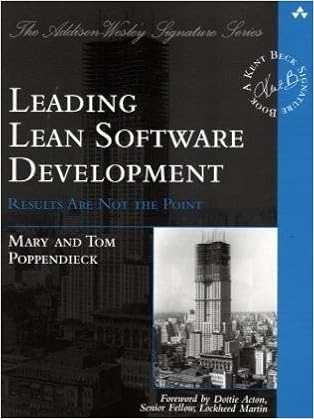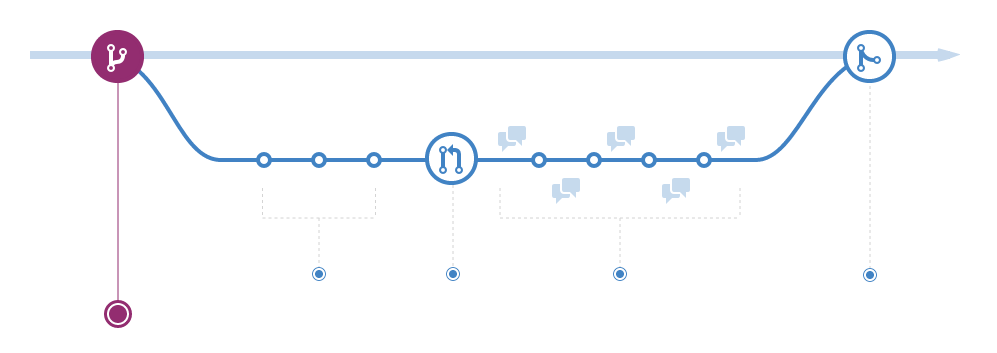
In the last year, I have been reflecting a lot on the decisions making process.
Not specifically how I make a decision but how people are making decisions in general.
The question that often bubbles in my mind is WHY, why I made that decision, why my colleague took that decision instead of the other one, why that person is approaching that problem from that angle.
Sometimes I really struggle to understand certain decisions made by people and this is not necessarily a bad thing but it made me wonder.
I started giving an answer to the following questions:
Why don’t I understand that decision?
Why my decision would differ so much from another person?
LACK OF CONTEXT.
Context, yes… context.
The definition of “context” provided by Google is
“the circumstances that form the setting for an event, statement, or idea, and in terms of which it can be fully understood.”
I think the keywords for understanding the meaning of context are circumstances and fully understood.
Let me share a story with you.
A few months ago I was in a meeting where some colleagues were proposing an idea for solving a governance challenge that from my point of view wasn’t fitting the purpose.
I listened, elaborate in my head and I asked a few questions but I didn’t share my opinion at all.
I spent the following hours rethinking that conversation, every single word was echoing in my mind trying to find a sense of the solution proposed during that meeting.
After a day or two, I replayed again in my head the entire conversation several times and I tried to explain how I would have solved that problem from my perspective for seeing overlaps between the two solutions.
During this mental exercise, what I realized was that from my colleagues perspective, in their own mental model the solution was absolute fine, my point of view was different from theirs, not necessarily better or worse.
I realised I was analysing the problem adding different dimensions and information that allowed me to find an angle not explored by the others due to the lack of context on how the architecture, the implementation and the governance would have worked all together.
The circumstances weren’t fully understood, more than that, the circumstances weren’t shared, we weren’t thinking about the same solution because we had a different context.
Context is everything.
Think about it.
In software architecture, a successful architecture may be replicated in another organization with a completely different outcome (positive or negative).
Have you ever asked yourself why?
Because the context is different, the players are different, the interactions, communications, environment, the governance are all different.
In an Architecture Decision Record (ADR) we usually capture a decision made along with its context and consequences. Often these decisions are revised in the following months because the business evolves and therefore the architecture has to evolve alongside the business.
What we decided six months may be obsolete right now.
This doesn’t mean we took the wrong decision at that time, but with the ADR we are trying to capture WHY we took that decision in a specific moment in time, drawing metaphorically what was the context of the architecture, the forces and the solutions evaluated for being able to reassess them on a later stage and bring everyone inside the organization up to speed on the what reasoning process we applied behind a specific decision.
I don’t think we can change the fact that context can dramatically modify the outcome of specific actions for better or worse.
There is although one thing we can definitely do, learn more about the context we work for providing the right solutions and take the correct direction. More we know, better we can think about the possible consequences.
Moreover, we need to invest time creating a common context in our company, despite we work in a large or small organization, often the context where an architect or a developer operate is completely different from the one of another colleague in the marketing team.
It doesn’t matter if we work in the same organization, the reality is the context for people in a different department, even different teams, may differ substantially.
A thing I learnt in the past few years is not stopping in front of a decision made but challenge or be challenged in a genuine way.
When I design a new architecture, I usually socialize with developers, with the principal engineers and the other architects.
What I’m looking for is feedback and validation of an idea, but more often than not I gather the point of view of different people, how they would solve the same problem from their perspective, with their experience and expertise.
It shouldn’t be a problem changing your mind after gathering more context, people may judge you because of that, the reality is they have just collaborated on enriching your knowledge, augmenting your context and making the solution you are working on better than before.
Therefore engage with your peers in a meaningful way, especially the ones outside your teams, engage with product people, senior management, stakeholders, architects, other developers, other departments even.
Don’t be afraid to leave your bubble but explore outside it. I know it sounds easier than what it is, but remember…
More context we are able to gather, better decisions we are going to make!
Don’t be afraid to ask WHY, to understand the value behind a decision, to understand the train of thoughts a person holds, because all of these actions provide you with more context enabling you, in the long run, to make better decisions or understand better the point of view of another person.
Tech people often research online, study books, watch videos, listen to podcasts, dream about the implementations made by other organizations, and I’m one of them.
However, the next step after a research is contextualizing the learnings in our own environment.
Contextualizing… context again.
Replicating 1 to 1 what we have learnt, may or may not provide the same outcome inside our organization.
Funny enough a few days ago, I was listening to a podcast episode on Domain-Driven Design (DDD), the speaker was sharing his experience of implementing DDD in two different companies.
The first time was a complete failure, they made several mistakes due to lack of experience in applying DDD breaking the services in very small units and ending up with a “distributed monolith”. The company closed a few years later.
In the second company although, the same person gained experience, reviewed his mistakes and applied with his new colleagues a similar approach avoiding the pitfalls he learnt from the previous experience.
It was a complete success, he learnt from his mistakes, he capitalized his experience and, with a different context, DDD was successfully implemented.
There are plenty of stories like this one out there of achievements and defeats, two sides of the same coin.
Every time we write a line of code, every time we design a new architecture, every time we introduce a piece of infrastructure, we should be able to answer the simple question WHY we are doing this.
I learnt by experience this answer is not always easy to provide.
Maybe we want to try a new approach or tool, maybe we thought that specific approach would make more sense over another, and there isn’t any problem on this but let’s spell it out, explain why we do things in a certain way and if we don’t have a specific reason, try to find it because it will help yourself and the people you are working with to follow your idea better and rationalize the decision in your heads.
Don’t be afraid of sharing your reasoning, the worst-case scenario is that you learn a bit more about the context you operate.
Having an idea turned down is not a defeat, instead, it’s a great win because it means next time you will be able to add a new dimension on your ideas that would make them more contextual for the environment you work with.
Context means also that there isn’t always right or wrong, black and white, right and left. There isn’t the absolute truth!
Often I see developers stack with their position because an “influential person said that” or “John Doe tweeted about it, so if he said that…”.
However, it may be applicable only to certain contexts. We should challenge ourselves and our beliefs from time to time, looking for different opinions and different point of views to have a better picture of how people may approach the same challenge differently from us. Embrace a different perspective and don’t push it back up front.
Next time you are in a discussion with a colleague or a friend, try to move a step forward finding the reason behind a particular decision or behaviour.
And then try again, and again.
Interacting with people, asking questions, sharing your thoughts or reasonings, will expose yourself and maybe sometimes put you outside your comfort zone, however, it will add to your personal growth an enormous value and more food for thought to reason about.
Context is not immutable, many people when they join a new company have a lack of context but that doesn’t mean they will not have it unless they are not looking for it.
I truly believe human beings are curious by nature, our passions drive our curiosity pushing the boundaries when we really and deeply love what we are doing.
In these cases, these people are going to look for creating quickly the context for making what they love valuable again.
I personally started to see the world with different eyes, I am trying to understand more the context where a specific architecture, implementation, decision or feature would be applied more than solutionize upfront.
I don’t believe there is always a solution that fits them all. And “the standard” is not applicable in every context.
I decided to believe in accepting failures for improving an empiric world called software development, in learning from failures and successes, in human interactions, in growing without limits, in understanding better the context before providing a solution, in a wrong decision made for lack of context, in listening and providing context, in challenging and being challenged, in starting with the WHY more than the HOW, in looking for the context no matter where I’ll find it.
It took me a while to gather my train of thoughts and decide to share them, it may be valuable for some of you or not.
Hopefully, you will find some interesting angle in these few words.
Thank you.



